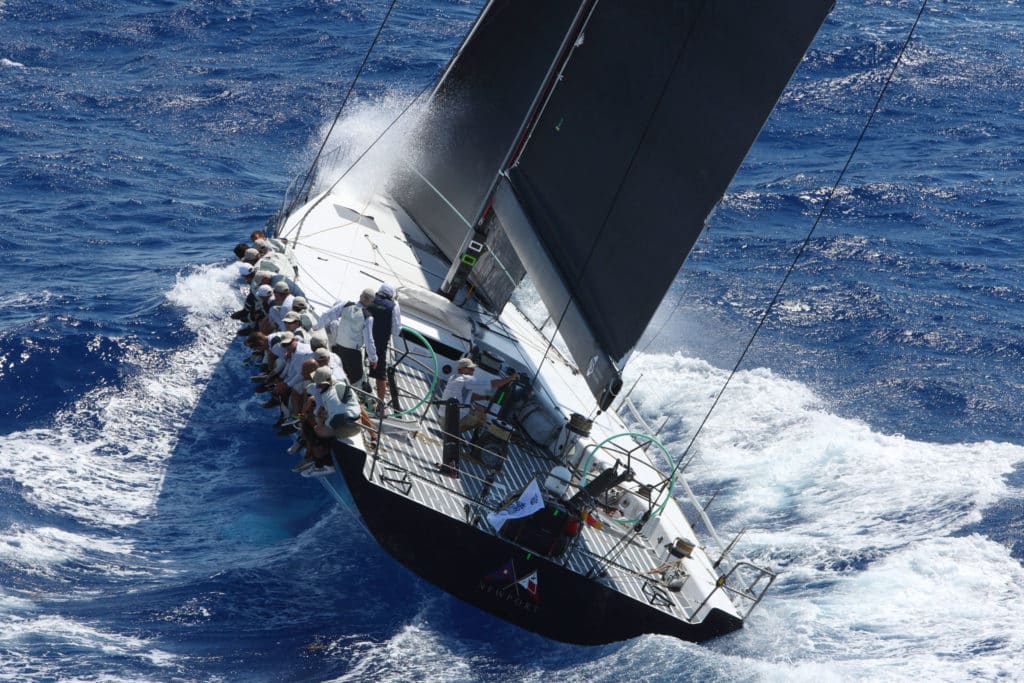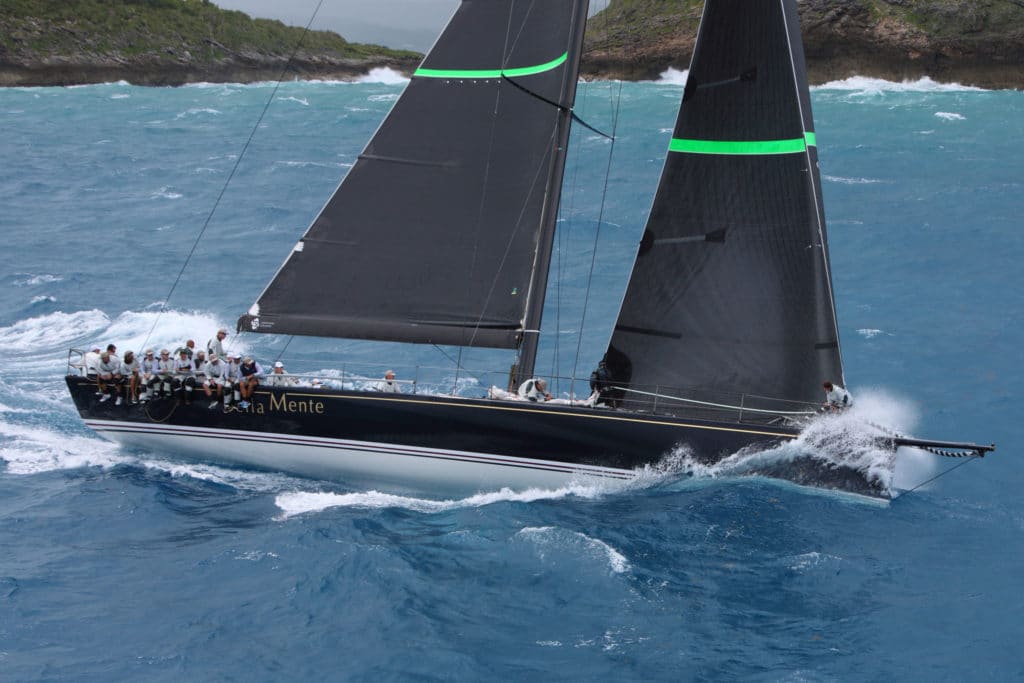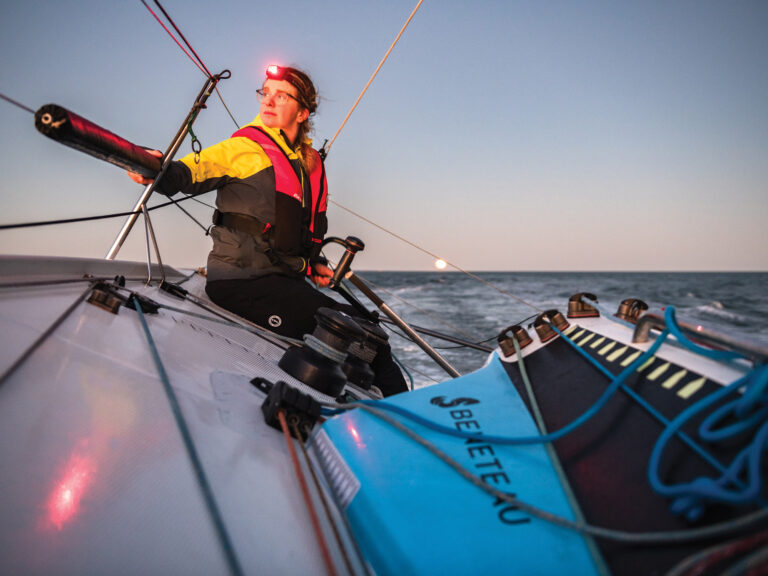In the recent Caribbean 600, the crew on Bella Mente had a philosophical/tactical shift in our offshore sail inventory. Conceptually, we wanted to always be sailing fast down the rhumbline (no secret here), never having to set a soft sail to in order to jibe down to the mark. When in doubt, aiming low of the mark and sending it as fast as possible sounds pretty simple in concept. Getting things right is tricky. What we learned was the proper flying shape, sizing, and spacing between our downwind inventories were critical to sailing the course as efficiently as possible, leaving as few miles as possible on the table when it was all said and done.
At the top of the downwind range, we have the nylon spinnaker that we race with on an inshore course. That sail is just shy of 500 square meters. The bottom of the size range is the jib, with an offshore staysail. In between, we use three sails: the A3 laminate, the masthead zero, and a fractional zero. All three are on furlers. After having sailed the course (and won the race—Ed.) there were a few lessons learned. I am by no means an offshore expert, and that’s the best side of it, as there is a lot to learn.
Sail handling. All three of the above mentioned sails are on furlers, and this is critical for sail handling. As the crew gets worn down during these sprint races, having sails that are manageable is critical. A lot can still go wrong because the sails are heavy, so practicing a good, tight furl is important. Regardless, there’s something re-assuring about having the sail on the furler that keeps it in control.
A3 versus masthead zero: It was really interesting to see the similarity in performance of the boat between these two sails. The masthead zero, however, provided a wide steering groove, whereas the A3 would have been a workout for the grinders. Some of this was because of the sea state. The takeaway was two sails at the angle we were sailing would work, but the sea state was such that the masthead zero provided a wider steering groove, which was important, especially at night.
My final thought is that three sails cover the range from A-sail to jib. While it sounds like a lot, we are working hard at simplicity. When you consider your own offshore inventory, think about it in terms of what is going to give you the most versatility, allowing you to sail the boat fast down the track. When evaluating your inventory, start and stop with the VMG downwind sail and jib. Place your two or three sails evenly between these two in order to allow for good coverage of both windspeed and wind angle. Filling those gaps, and understanding how the boat performs—be it scientifically or with feel will—will give you confidence to making the right decision. Inevitably, sailing fast down the track and coming up to the turning mark keeps the boat at top performance.











